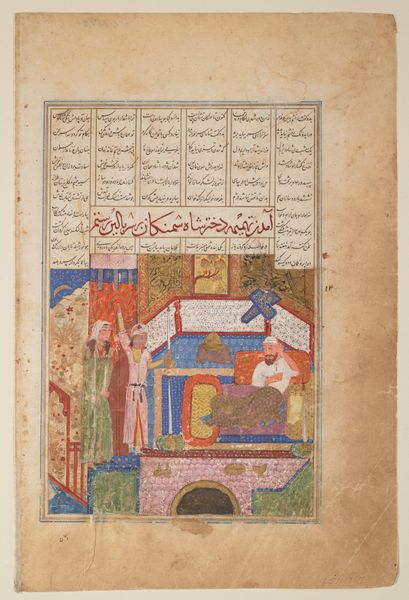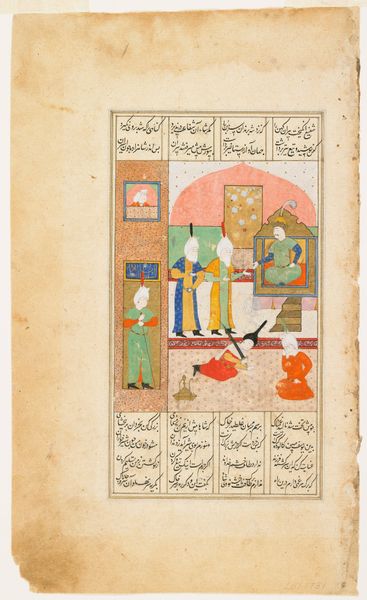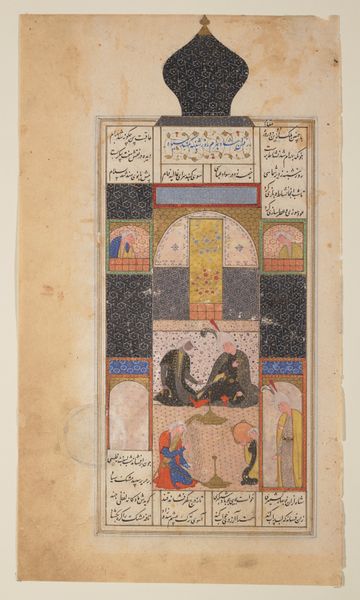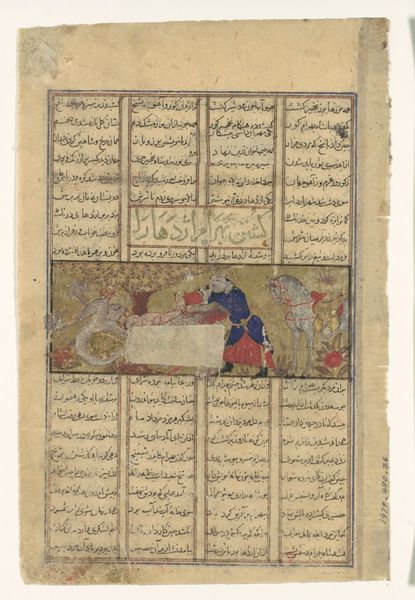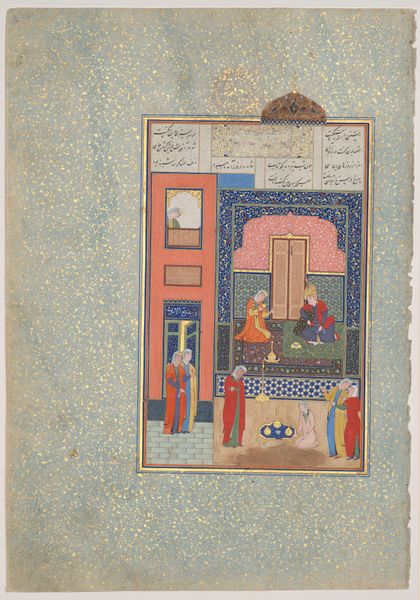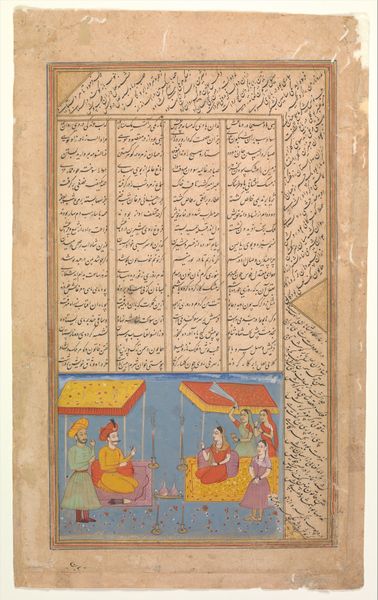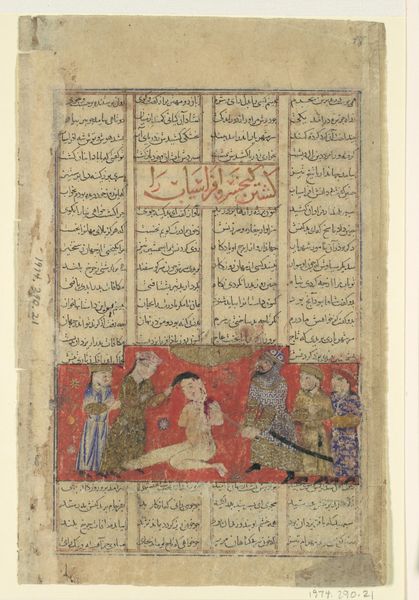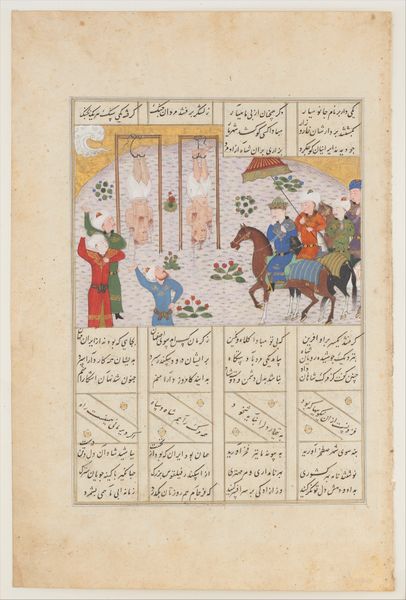
"Bilal Calling to Prayer While Prophet Muhammad and Ali are Visited by Emissaries," Folio from a Hamla-yi Haidari 1795 - 1845
0:00
0:00
drawing, watercolor
#
portrait
#
drawing
#
water colours
#
narrative-art
#
figuration
#
watercolor
#
islamic-art
#
watercolour illustration
#
miniature
Dimensions: H. 19 5/8 in. (49.8 cm) W. 11 1/3 in. (28.8 cm)
Copyright: Public Domain
This folio from a Hamla-yi Haidari, painted by Muhammad Rafi Khan around the 17th century, presents a layered composition dominated by geometric forms and serene colors. The structure is divided into distinct registers, each containing figures rendered with precise detail and surrounded by bands of text. The architecture, with its stylized arches, dome, and linear staircase, frames the scenes within. The spatial arrangement defies naturalistic perspective, creating a flattened effect that emphasizes the symbolic rather than the representational. This deliberate distortion destabilizes conventional notions of depth, inviting a deeper contemplation of the depicted events. The use of color is restrained, with muted blues, greens, and reds contributing to an atmosphere of quiet reverence. The halos around the figures of Muhammad and Ali suggest their elevated status, but also question the nature of divine representation. The artist employs a semiotic system where visual elements serve as signs, pointing to complex religious and cultural narratives. This folio doesn't merely illustrate a story; it invites us to decode its visual language, engaging with the piece as a site of ongoing interpretation.
Comments
No comments
Be the first to comment and join the conversation on the ultimate creative platform.
